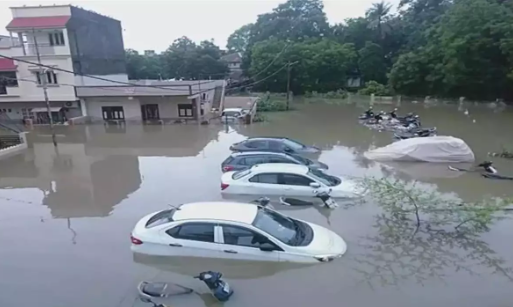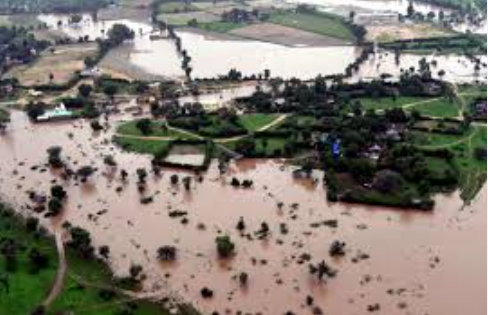Vadodara, Gujarat, is currently grappling with extreme flooding because of non-stop and severe rainfall during the last few days. The Vishwamitri River has overflowed, leading to enormous waterlogging in numerous residential areas. The metropolis has recorded between 26-28 cm of rainfall within a short span, with the Gujarat Flood worsening the state of affairs substantially Flood-like Situation In Vadodara-Gujarat Flood
The torrential rains have induced the discharge of excess water from nearby reservoirs, contributing further to the flooding. As a result, numerous neighborhoods in Vadodara at the moment are underwater, with water invading houses and making many roads impassable. This has compelled many citizens to try to find shelter in more secure locations. The flooding has additionally impacted the Kashi Vishwanath Mahadev Temple, a key landmark inside the metropolis, which has been submerged, leading to its temporary closure.

The neighborhood government is on high alert, engaging in rescue operations and offering alleviation to the affected populace. The India Meteorological Branch (IMD) has issued a pink alert, predicting additional heavy rainfall, which can potentially improve the disaster. This is one of the most severe flooding activities the metropolis has seen in decades. With long-time citizens noting that they have not witnessed such excessive conditions in the past 30 years.
Top Updates On Gujarat Flooding
- Red Alert: The IMD has issued a red alert for 27 districts in Gujarat, anticipating heavy to extremely heavy rainfall until August 29, heightening the risk of flash floods across the state.
- Casualties and Evacuations: Three people have died in rain-related incidents, and authorities have evacuated over 17,800 people from flood-prone areas to safer locations. The districts most affected include Valsad, Navsari, Surat, Narmada, and Panchmahal.
- Vishwamitri River Crisis: The overflowing Vishwamitri River in Vadodara has caused significant waterlogging. Leading to the closure of seven bridges and the evacuation of residents from vulnerable areas.
- Infrastructure Disruptions: The flooding has severely impacted daily life, disrupting transportation with damaged roads, bridges, and railway services. The Narmada River in Bharuch has risen above the danger level. Prompting the release of water from the Sardar Sarovar Dam and further evacuations.
- Government Response: Chief Minister Bhupendra Patel has canceled the leave of all officials to ensure a coordinated response to the crisis. Authorities have closed schools in affected areas and postponed exams due to the severe flooding.
- Rescue Operations: The National Disaster Response Force (NDRF) has deployed 13 teams, with additional teams from the State Disaster Response Force (SDRF) conducting rescue and relief efforts throughout the state.
The situation remains highly precarious, with further rainfall expected. Authorities are advising residents to stay safe and avoid unnecessary travel.
Post-Flood Safety Guidelines

- Health Precautions: Seek medical treatment immediately to prevent waterborne diseases, which are common after floods.
- Safety Measures: Avoid entering deep or unknown waters and stay away from riverbanks even after the water level recedes.
- Food Safety: Dispose of any food that has come into contact with floodwater and ensure you consume only safe food.
- Rescue Protocols: Follow official instructions for rescue operations and do not attempt any shortcuts. Remain in shelters until local authorities declare it safe to return home.








